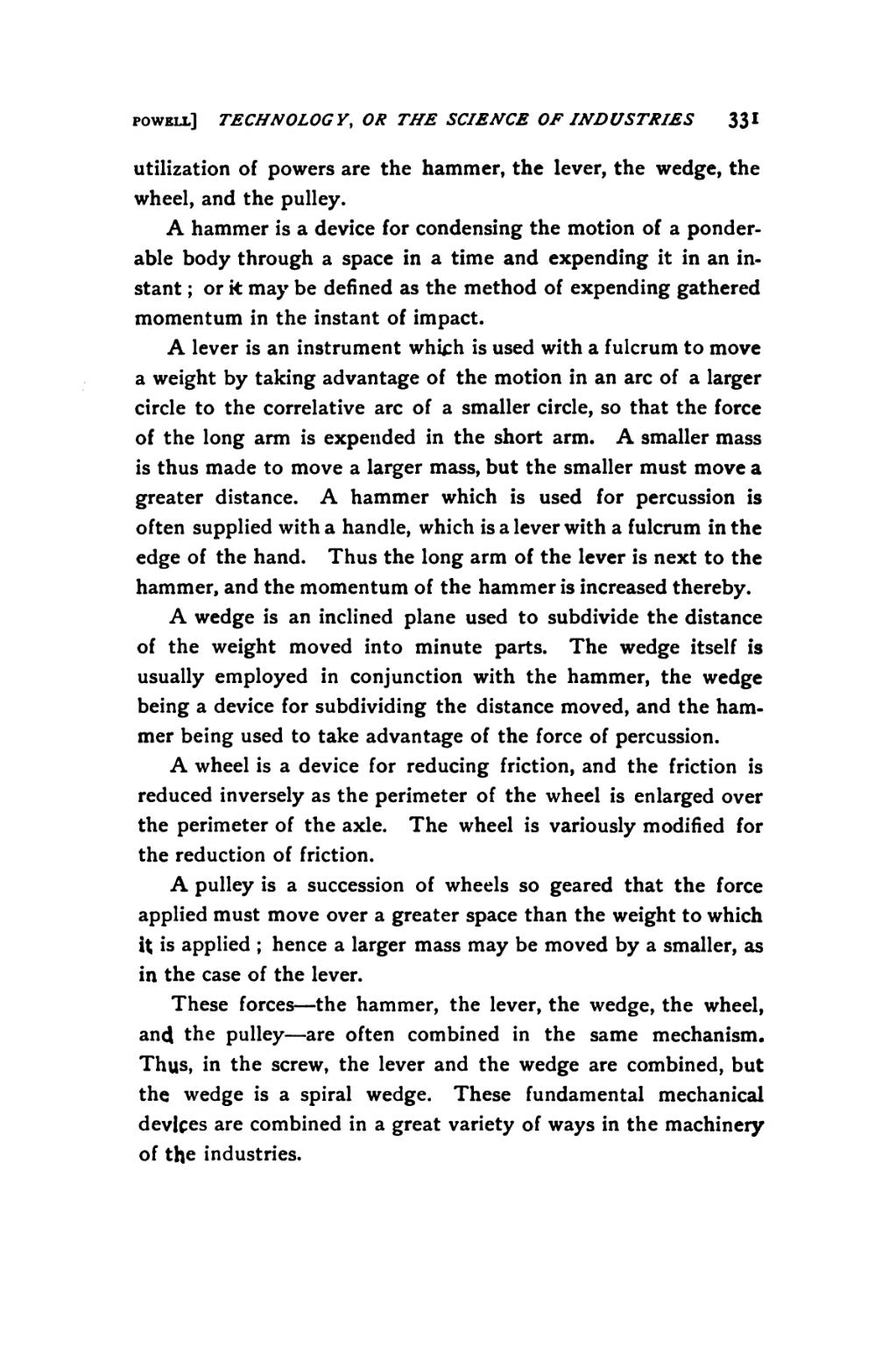powell] TECHNOLOGY, OR THE SCIENCE OF INDUSTRIES 33 l
utilization of powers are the hammer, the lever, the wedge, the wheel, and the pulley.
A hammer is a device for condensing the motion of a ponder- able body through a space in a time and expending it in an in- stant ; or k may be defined as the method of expending gathered momentum in the instant of impact.
A lever is an instrument whfch is used with a fulcrum to move a weight by taking advantage of the motion in an arc of a larger circle to the correlative arc of a smaller circle, so that the force of the long arm is expended in the short arm. A smaller mass is thus made to move a larger mass, but the smaller must move a greater distance. A hammer which is used for percussion is often supplied with a handle, which is a lever with a fulcrum in the edge of the hand. Thus the long arm of the lever is next to the hammer, and the momentum of the hammer is increased thereby.
A wedge is an inclined plane used to subdivide the distance of the weight moved into minute parts. The wedge itself is usually employed in conjunction with the hammer, the wedge being a device for subdividing the distance moved, and the ham- mer being used to take advantage of the force of percussion.
A wheel is a device for reducing friction, and the friction is reduced inversely as the perimeter of the wheel is enlarged over the perimeter of the axle. The wheel is variously modified for the reduction of friction.
A pulley is a succession of wheels so geared that the force applied must move over a greater space than the weight to which it is applied ; hence a larger mass may be moved by a smaller, as in the case of the lever.
These forces — the hammer, the lever, the wedge, the wheel, and the pulley — are often combined in the same mechanism. Thus, in the screw, the lever and the wedge are combined, but the wedge is a spiral wedge. These fundamental mechanical devices are combined in a great variety of ways in the machinery of the industries.
�� �
